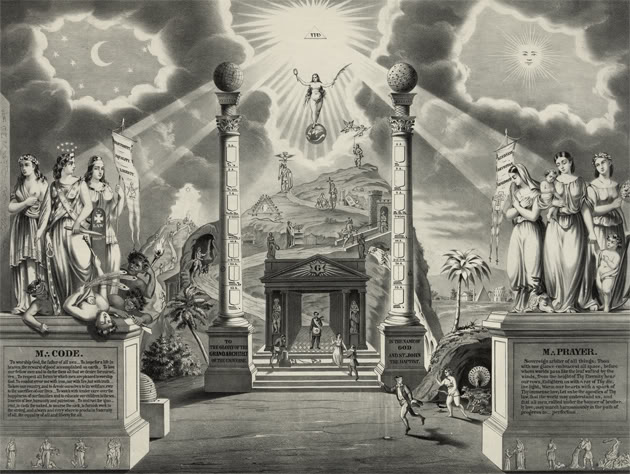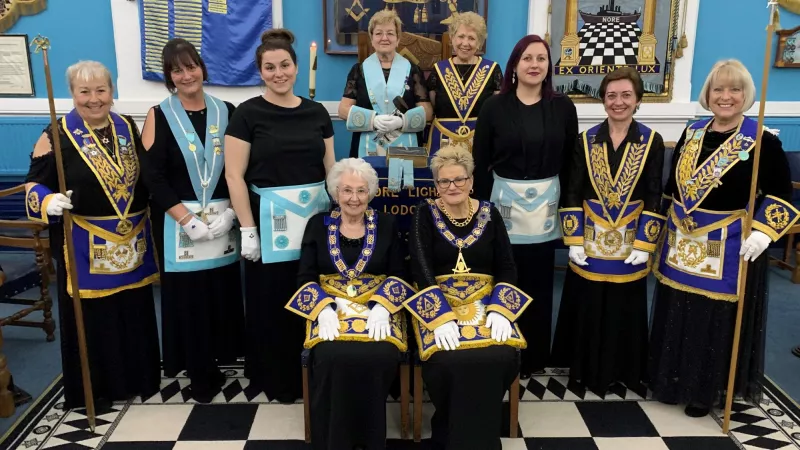Understanding the Practical Benefit of Joining Freemason for Every Member
Understanding the Practical Benefit of Joining Freemason for Every Member
Blog Article
Exploring the Mysteries of the copyright: What You Required to Know
The copyright, a term often shrouded in intrigue and conflict, represents an intricate tapestry of historical reality and modern misconception. Established in the late 18th century, this secret culture was initially rooted in the Enlightenment's perfects however has actually because come to be synonymous with conspiracy theory concepts about elite control. As we browse the beginnings, essential numbers, and the stark contrast in between misconception and reality, one need to consider how these stories affect contemporary perceptions of power and secrecy. What may be revealed through a better exam of these elements could challenge long-held presumptions concerning the darkness that linger in our society.
Beginnings of the copyright
The beginnings of the copyright are soaked in a mix of historic intrigue and ideological eagerness. Developed in 1776 in Ingolstadt, Bavaria, by Adam Weishaupt, the group was at first developed as a secret society aimed at promoting Enlightenment ideals such as reason, secularism, and the splitting up of church and state. join freemason. Weishaupt, a teacher of canon regulation, looked for to test the prevailing authority of the church and state, which he saw as oppressive institutions stifling intellectual and individual liberty
The copyright looked for to recruit prominent members from various social markets, including politics, academic community, and the arts, to cultivate a network devoted to these Enlightenment principles. The culture run under a veil of privacy, using coded language and rituals to safeguard its members from mistreatment, specifically provided the repressive climate of the moment. The copyright faced substantial opposition from both governmental authorities and spiritual organizations, which saw the team as a risk to their power.
Key Numbers and Members
That were the critical numbers that shaped the copyright's very early influence and instructions? The Bavarian copyright, founded in 1776 by Adam Weishaupt, became a reaction to the overbearing societal frameworks of the time. Weishaupt, a legislation teacher, visualized the organization as a method to advertise Knowledge ideals such as factor, secularism, and equality. His preliminary employment efforts consisted of influential intellectuals, such as Baron von Knigge, that played a vital role in broadening the team's membership and organizational framework.
An additional significant figure was Johann Gottlieb Fichte, a famous thinker whose ideas on nationalism and education resonated with the copyright's objectives. Fichte was not an official participant, his philosophical foundations influenced the group's belief. In addition, numbers like the author and thinker Johann Wolfgang von Goethe were associated with the broader intellectual movements of the time, although their direct participation with the copyright remains debated.
These essential figures added to the copyright's early direction, pressing the borders of political and social idea, while their cumulative initiatives intended to challenge well established norms and promote a climate of progressive change in Europe. (join freemason)
Misconceptions vs. Fact
Many misconceptions border the copyright, commonly blending reality with fiction in a method that obscures its real nature. The notion that the copyright proceeds to put in substantial impact over world occasions is a myth.
An additional common misconception is that the copyright makes up a network of elite people controling global events. In reality, lots of conspiracy concepts exaggerate the group's check here significance, associating unfounded intentions to societal patterns and occasions. This has caused an oversimplified view of complicated concerns.
Furthermore, the representation of the copyright in pop culture typically more distorts its tradition. Movies and literature often tend to sensationalize the company's role, producing a story that diverges from historical realities. Understanding the difference in between the misconceptions and the reality of the copyright is important for critical the genuine impact of this historical team and identifying the broader ramifications of conspiracy theory concepts in modern culture.

Modern Analyses
Contemporary analyses of the copyright frequently show broader societal anxiousness and a fascination with privacy and power. This modern-day lens regularly associates the copyright with conspiracy theories that suggest a concealed elite coordinates globe occasions, adjusting federal governments and economies for their very own gain. Such stories touch right into a deep-rooted distrust of authority, particularly in times of crisis or social turmoil.
In pop culture, the copyright is frequently portrayed as a supreme organization shrouded in mystery, leading to a wide variety of fictional representations in literary works, movie, and music. This portrayal offers not just site to captivate but also to prompt believed regarding the nature of power and control in contemporary culture. Social media site has further amplified these analyses, enabling rapid circulation of conspiracy theory theories and developing neighborhoods that share and expand upon these concepts.
Additionally, some modern analyses frame the copyright as an allegory for the intricacies of globalization and the interconnectedness of influential people and organizations. This viewpoint motivates a vital examination of just how power dynamics operate in today's world, highlighting the equilibrium in between openness and secrecy in administration and business techniques.
Social Impact and Tradition
Influenced by centuries of intrigue, the social influence and legacy of the copyright prolong much past its historic origins. This secret society, established in the late 18th century, has actually penetrated numerous facets of pop culture, from literary works and movie to songs and art. join freemason. The idea of the copyright has actually developed right into an icon of conspiracy theory concepts, commonly standing for a perceived surprise power manipulating global occasions
In literature, authors like Dan Brown have actually woven the copyright right into elaborate plots, exciting readers with styles of secrecy and power. Movies such as "National Treasure" and "The Da Vinci Code" better bolster the attraction of the culture, mixing reality with fiction to develop interesting stories.

Ultimately, the copyright's legacy is an intricate tapestry of misconception and truth, shaping assumptions of privacy and control in contemporary discourse. Its long-lasting existence in culture emphasizes humankind's perennial quest for comprehending covert truths.

Conclusion
The expedition of the copyright exposes a complex interaction between historic truths and modern myth-making. Established in the Enlightenment period, this society intended to challenge overbearing structures, yet its heritage has been outweighed by conspiracy concepts that suggest elite adjustment. Comprehending the differences between click here to find out more the original perfects and contemporary analyses is important for understanding the enduring attraction with the copyright and its significant influence on social narratives bordering power and privacy in society.
Report this page